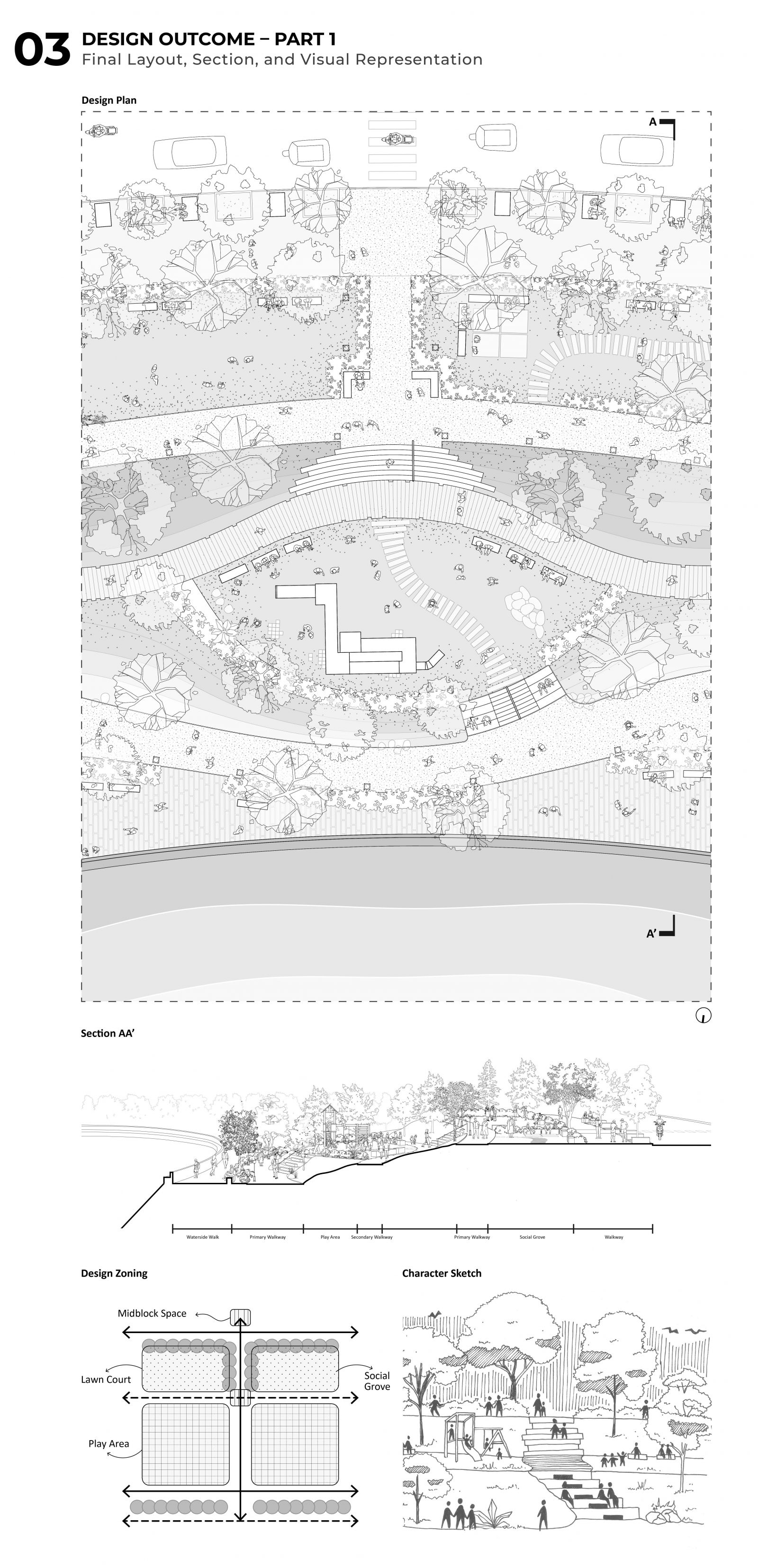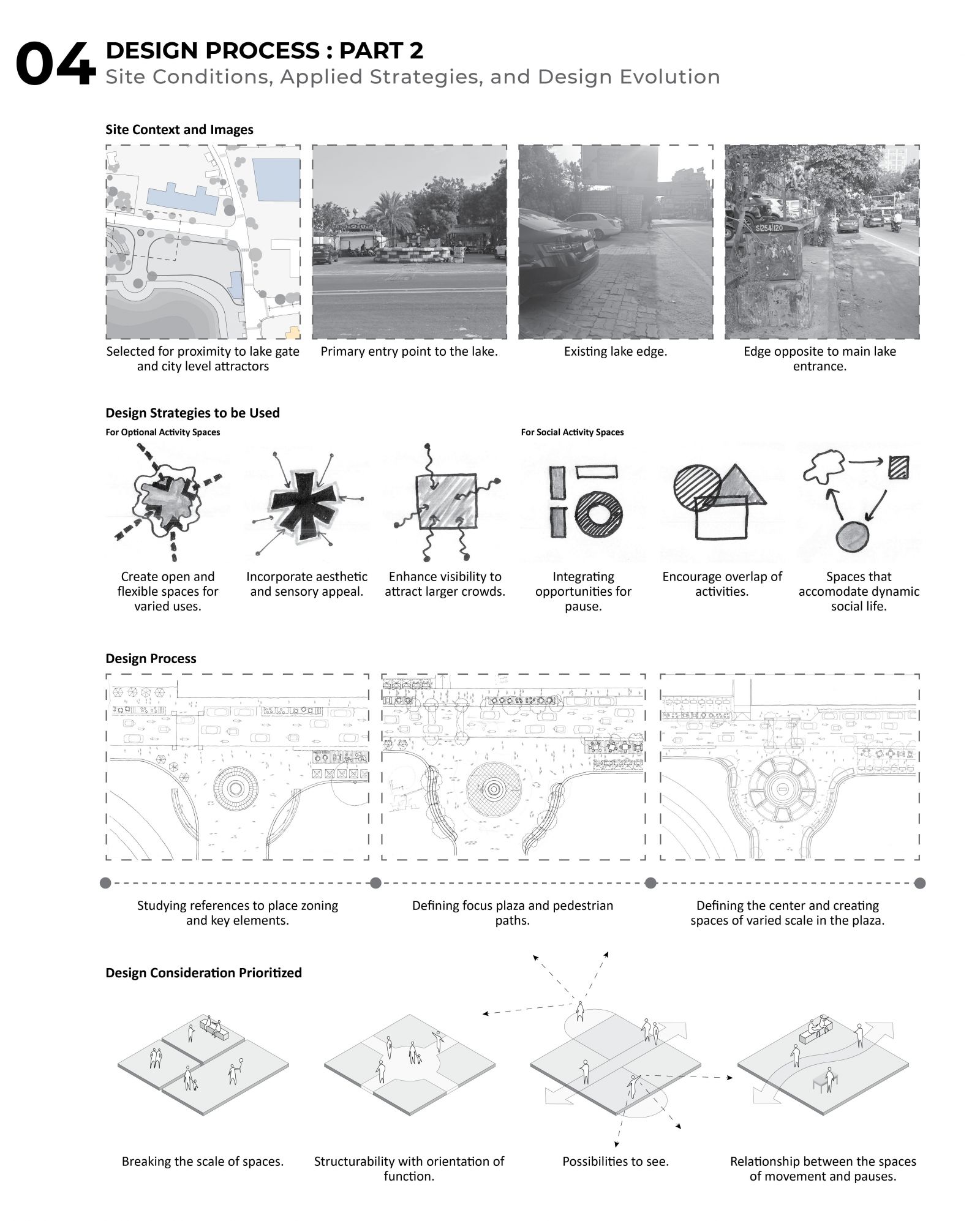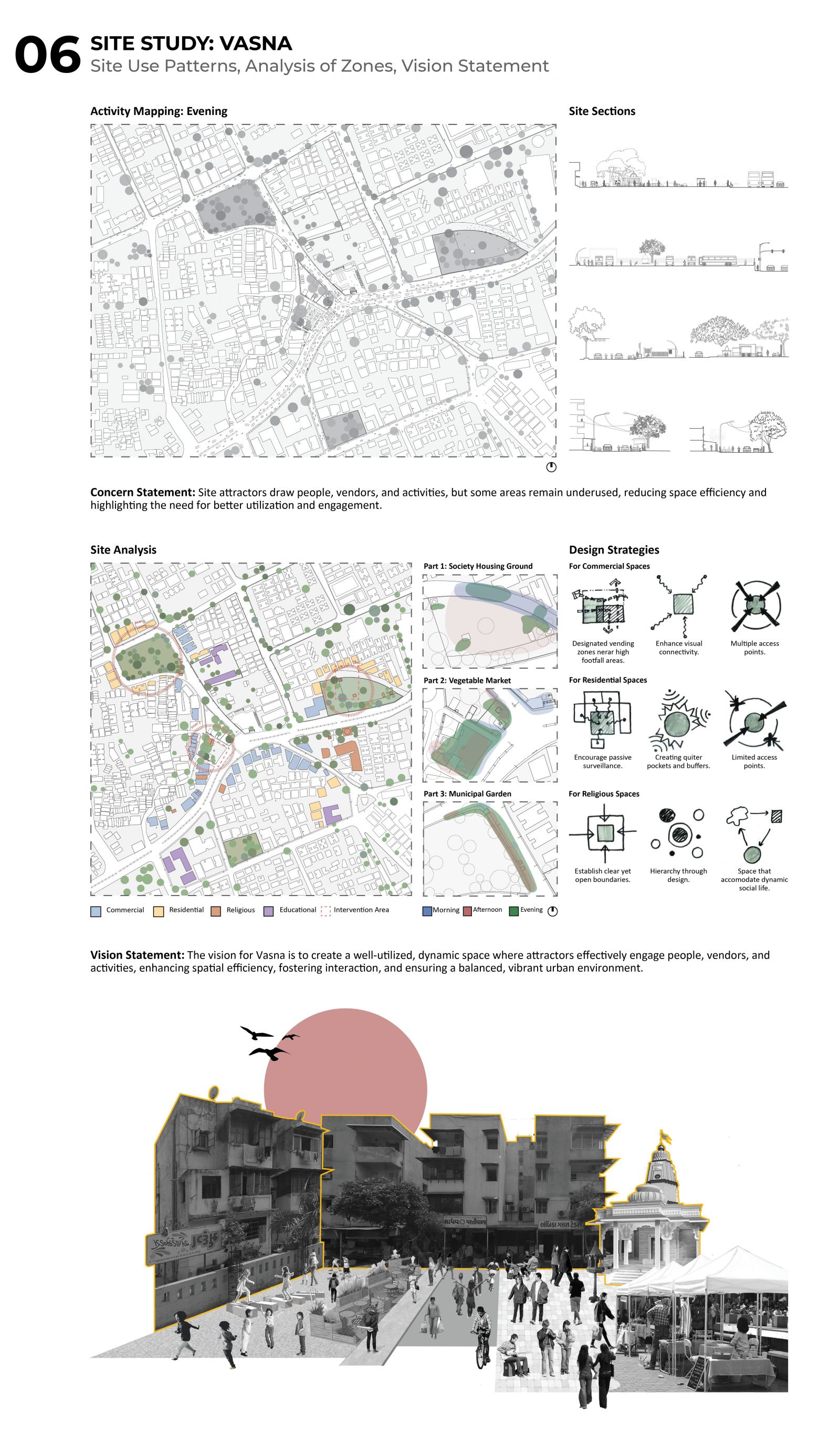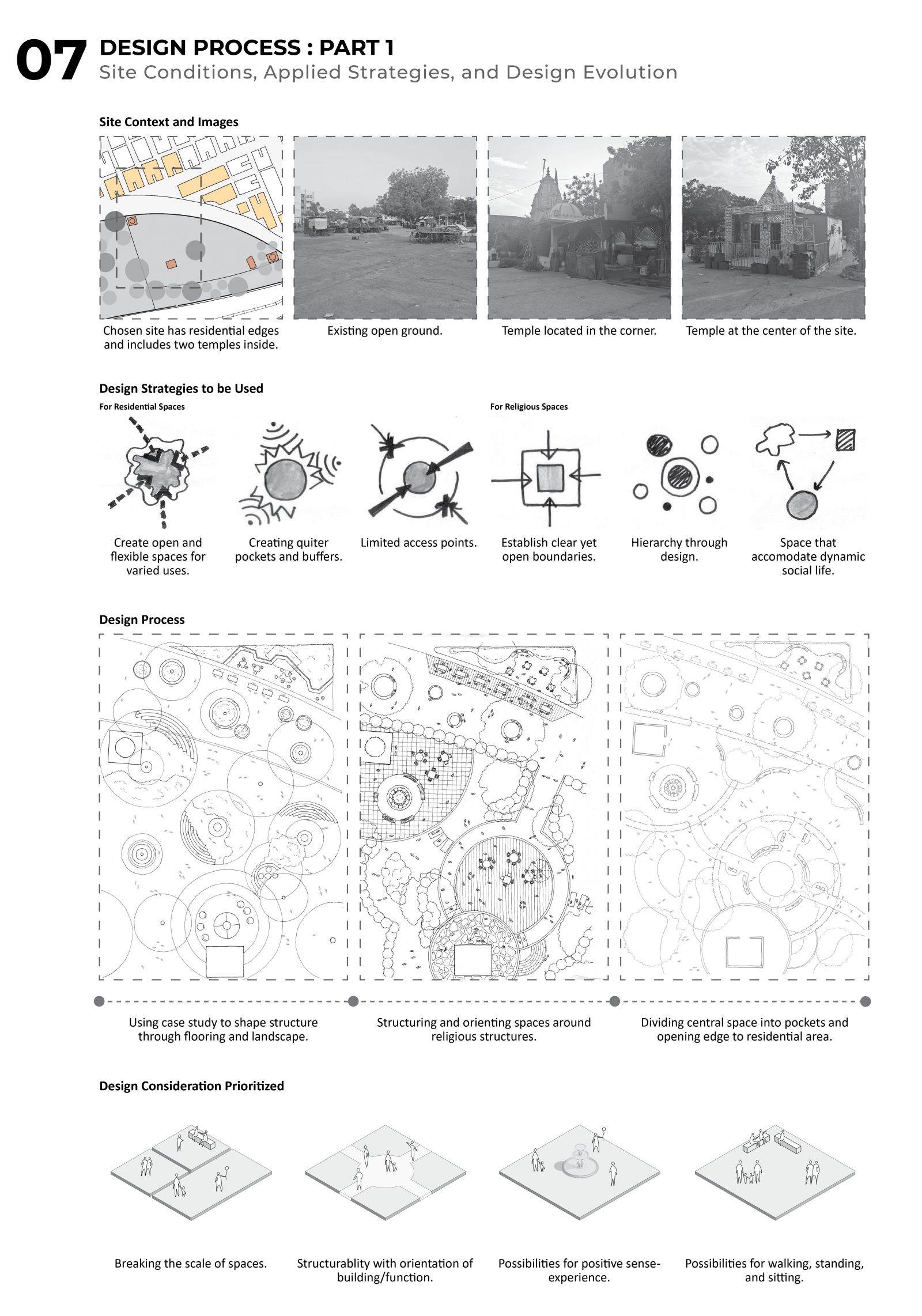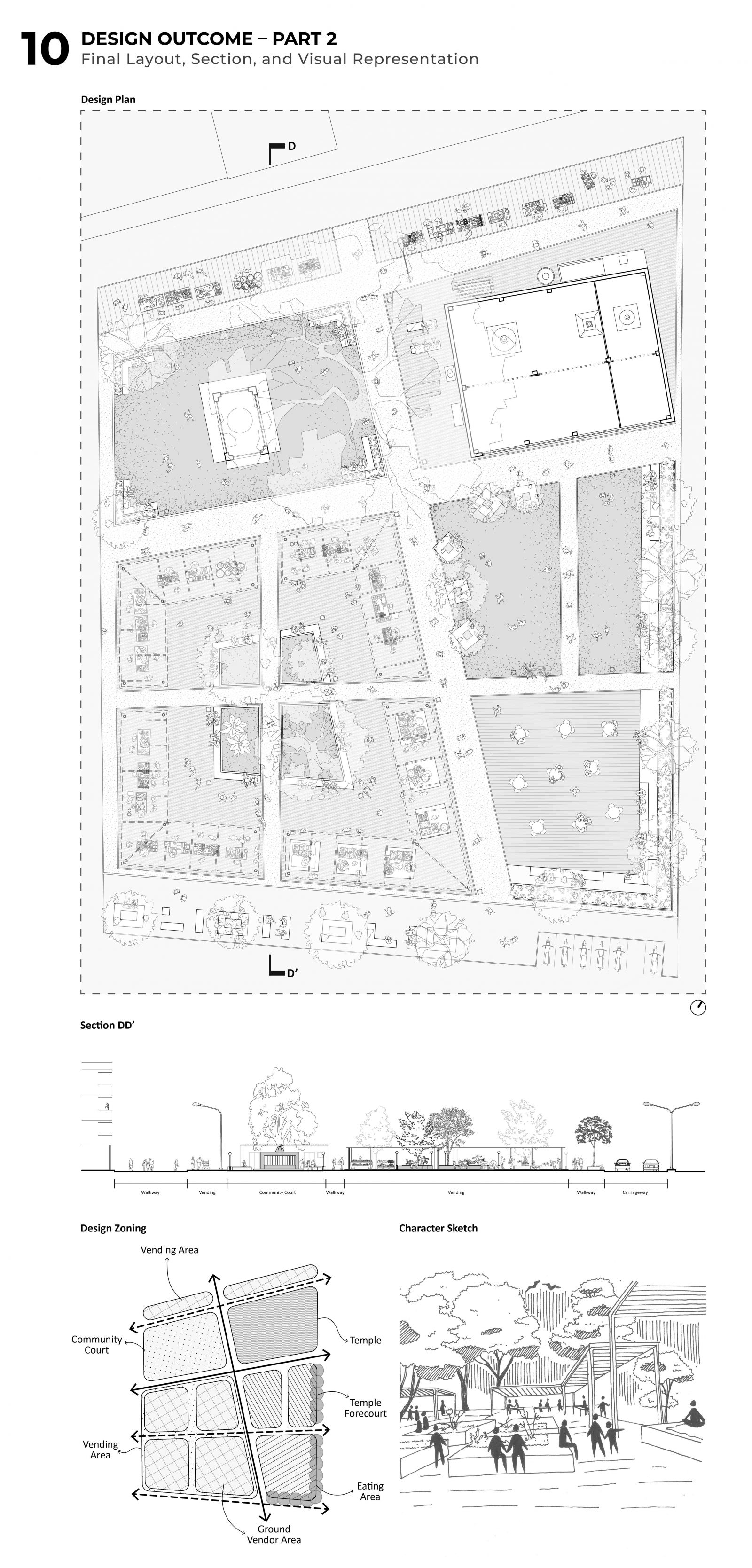Your browser is out-of-date!
For a richer surfing experience on our website, please update your browser. Update my browser now!
For a richer surfing experience on our website, please update your browser. Update my browser now!
This project began with studying Jan Gehl’s criteria for good public spaces. Based on those learnings, key considerations were identified for designing better public spaces in Ahmedabad. Two sites—Vastrapur and Vasna—were selected for design interventions. Within these, specific locations were chosen based on building use, existing functions, and observed activities. The design aims to improve usability, comfort, and engagement by incorporating considerations like human scale, walkability, safety, and flexible use. Efforts were made to integrate these principles into the design to respond to the local context and user needs effectively.
View Additional Work

